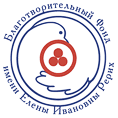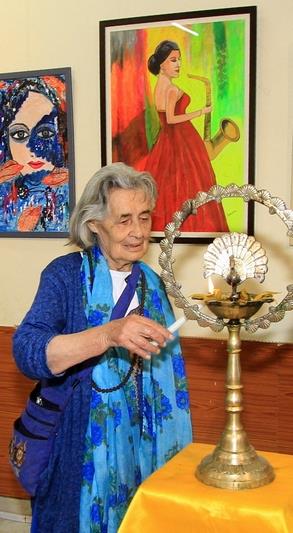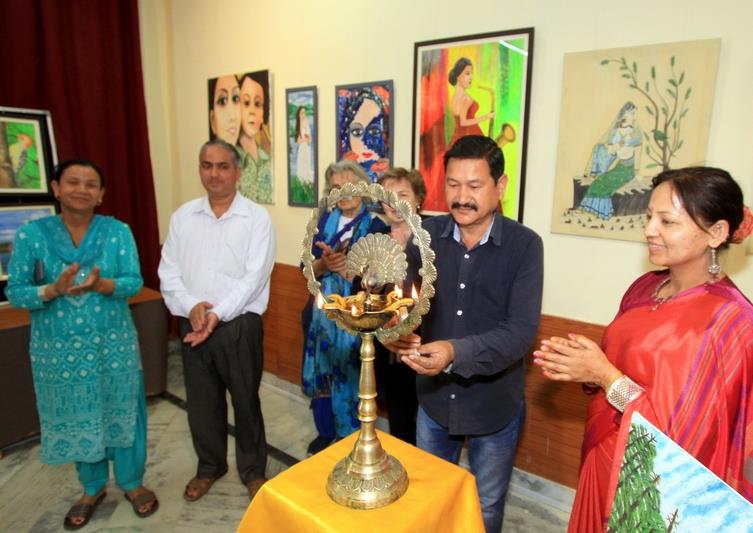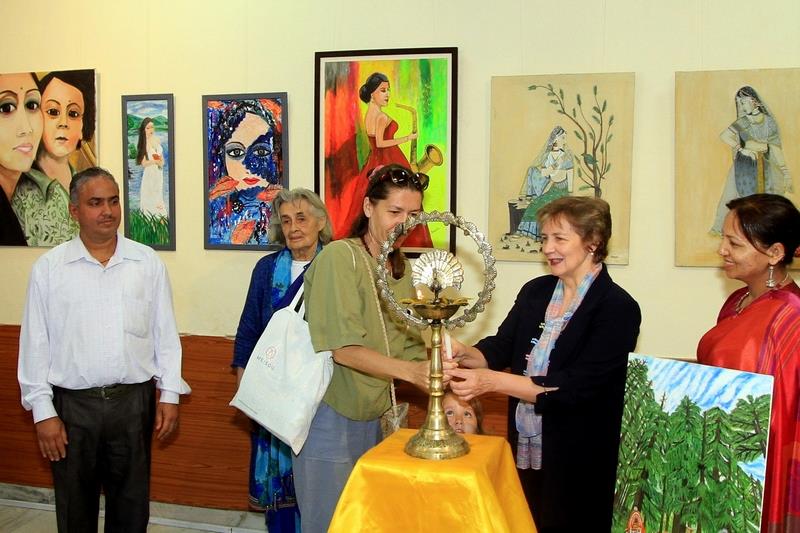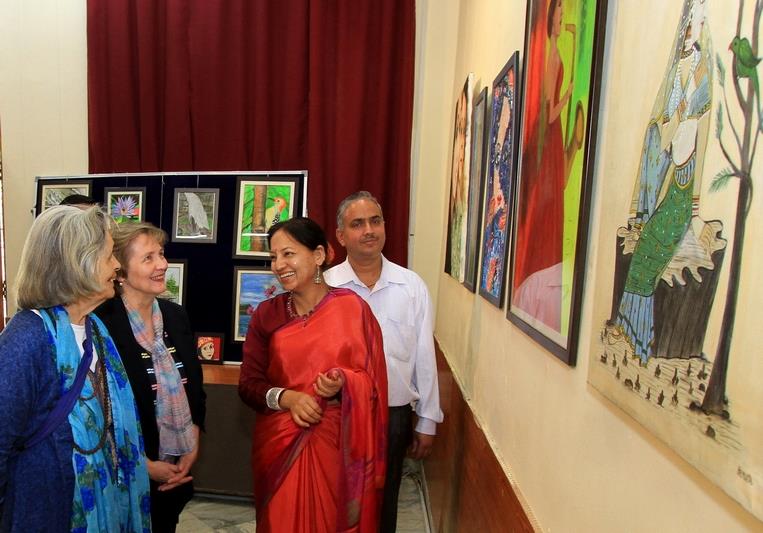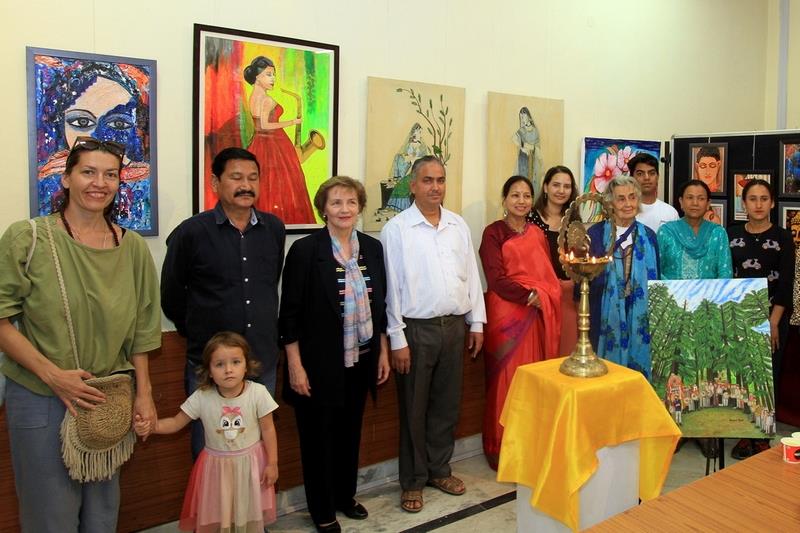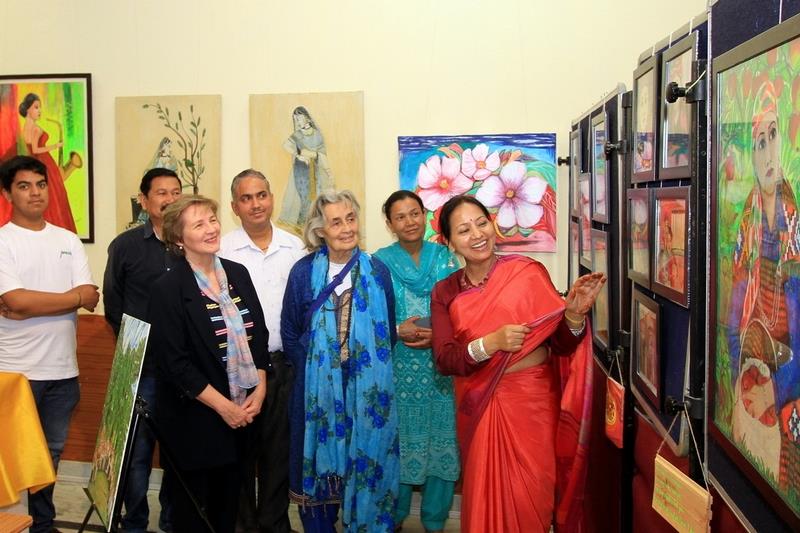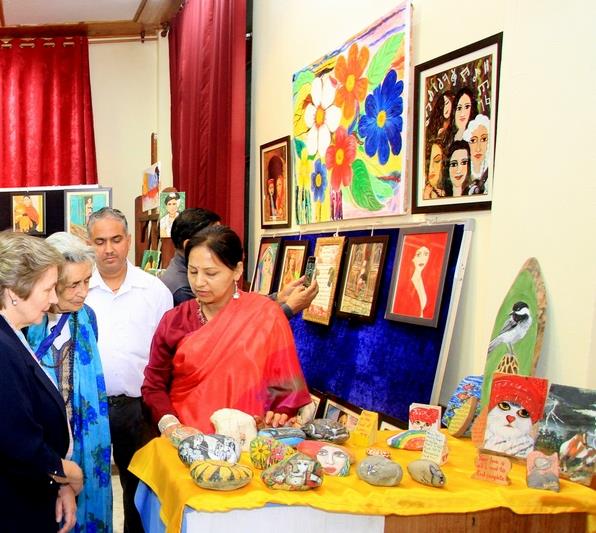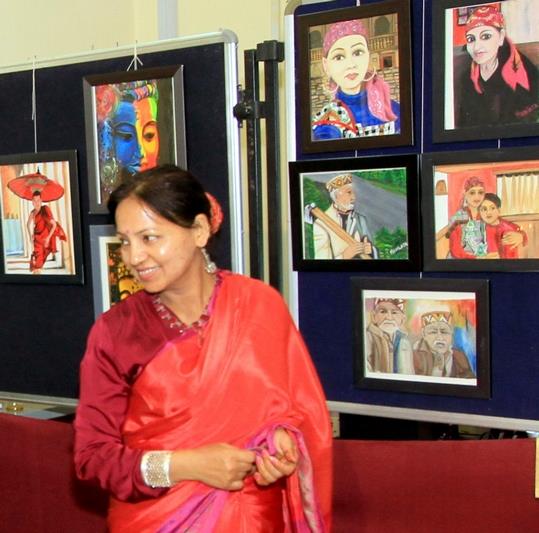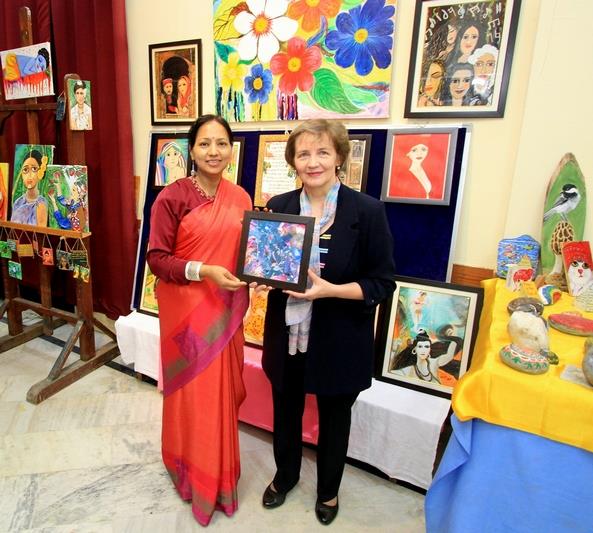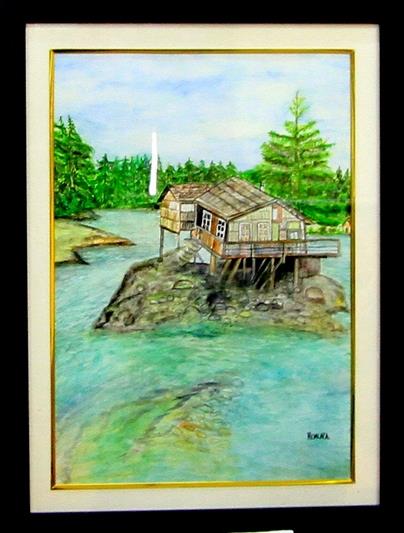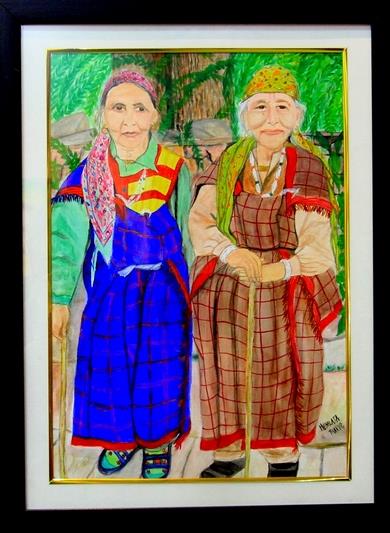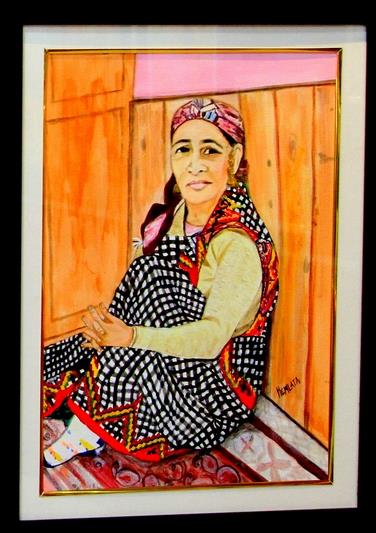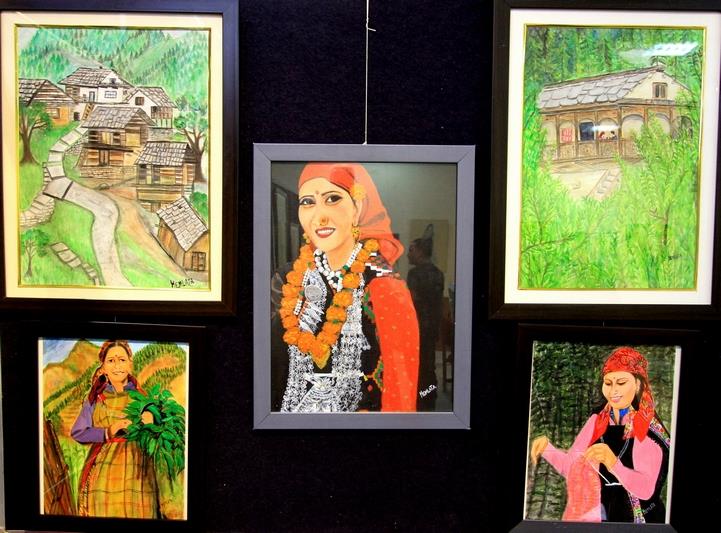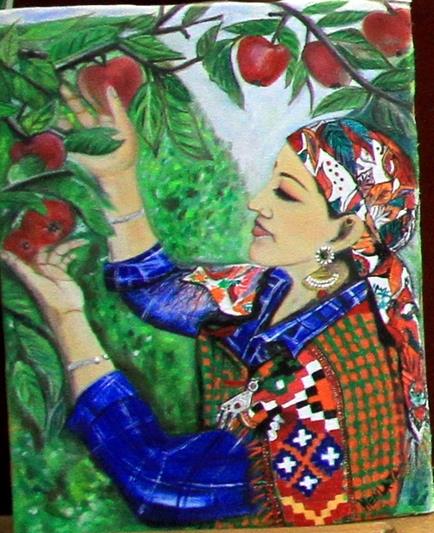On the eternally existent and the immutable.... Hem Lata Thakur's exhibition at IRMT

|
Hem Lata Thakur is an artist from Manali (HP). She has no professional art education, but her natural talent and ardent desire to express her feelings and impressions with the help of colors have determined her creative way. On June 28-30, her first exhibition was held at the International Roerich Memorial Trust. The exhibition was inaugurated by Carol Fraser, an artist from England and long-time friend of the IRMT, and Larisa Surgina, Russian curator of the IRMT, an employee of the International Center of the Roerichs (Moscow), as well as Indian and Russian staff and guests of the Roerichs' Estate.
Hem Lata learns art on her own, adopting skills from various artists, forming her own style, close to the style of naive art. She is most of all attracted to color, its bright shades and combinations, its refraction in folk traditions and folk art. Colorful ornaments, birds with bright plumage, expressive faces with shining eyes, large flowers and juicy fruits, nature saturated with light - all this creates a feeling of joy, celebration, inspiration.
Hem Lata Thakur's sources of creativity are the nature, cultural heritage and traditions of the Kullu Valley. Her paintings depict the traditional buildings of the Kullu Valley, with their stone roofs and ancient wooden carvings, and the local people engaged in their customary labor. She paints a lot of women - in colorful traditional clothes, at home or working in the garden, against the background of the river or among the dense greenery of trees. In these subjects, simple but imbued with a sense of celebration, there is a story of love and beauty, of joy and wisdom - the eternal and essential things on which life is based.

